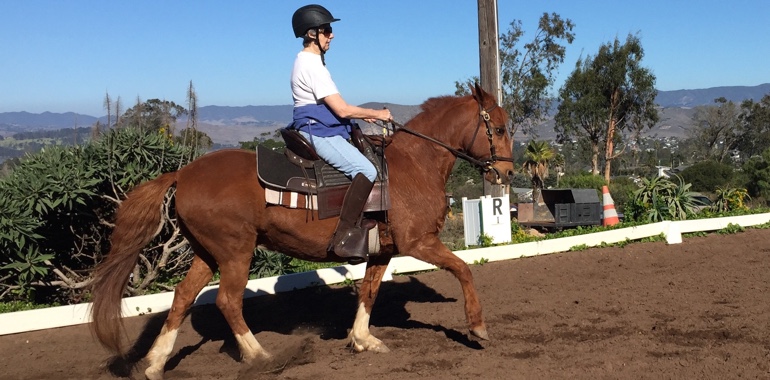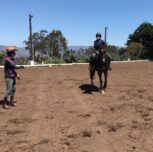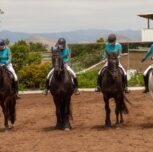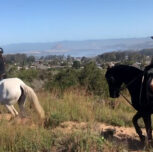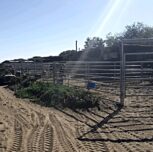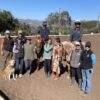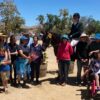Hello everyone! I recently completed this article for Dressage Today and wanted to share this helpful information on the benefits of Dressage Basics Training right away. Read on to learn how Dressage Basics can improve your horse, no matter the riding style.
In reflecting back over almost 50 years of teaching and training horses, one of my most prominent truths is that dressage basics training helps every type of horse. Dressage, which is a French word meaning “training”, is a systematic method of training a horse. Through using a progression of exercises of increasing difficulty, based upon a platform of correct basics, the horse’s agility, balance, suppleness, and cooperation can be enhanced.
The Horse Training Benefits Of Dressage Basics
Dressage can be introduced at any age of the horse. As with most anything else however, beginning at a younger age will bring quicker results with less confusion.
Dressage when presented patiently and correctly, enhances the horse’s gaits, builds beautiful top muscling in the body, and creates a more focused mind with willing cooperation.
Before putting attention to improving any horse’s way of going however, the focus must first be drawn to the rider’s position. The horse is greatly influenced by how the rider sits on his back. When a rider sits in a balanced posture, maintains a supple lower back and allows the horse’s movement to flow smoothly through his body, the horse has the greatest chance to express his gaits in a calm and even manner. When a rider sits in a crooked fashion, such as collapses one hip, throws one shoulder forward, uses the reins inconsistently or for balance, or braces the feet in the stirrups, the resulting lack of balance will be quickly transmitted to the horse. Often unnecessary tension is then created in the horse, which deteriorates the chance for balance, harmony and trust.
The platform of correct dressage basics I previously mentioned would include the concepts of steady rhythm, suppleness, contact, impulsion, straightness, and later collection.
Whatever gait is being ridden, it is very impactful that the rider focuses of the RHYTHM remaining consistent. It may be helpful to count with the footfalls or hum a tune so it serves as a reminder. The most powerful impact we have on our horse’s rhythm is through our body’s rhythm first. If stabilizing our rhythm is not enough, then clear relaxation down of the legs and/or a calm, steadier support of the reins may be added. I remember a Tennessee Walker I rode for a gentleman in the past. At first her rhythm in all her gaits was quite sporadic and inconsistent. By simply focusing on stabilizing her footfalls, she relaxed a lot and stretched more consistently over her back on the top muscling of her body.
The Basics Of Dressage Training And Advantages
SUPPLENESS refers to the relaxation and elasticity of the horse’s body. In most cases, a supple body performs a task more gracefully and efficiently than a stiff one. In dressage, we ride correct bending on circles, corners, and the various exercises to attain a higher degree of balance and adjustability in our horses. (We bend the horse’s body to the shape that is being ridden) Transitions between the gaits and within the gaits also add variation and interest. Riding predictably and consistently in this way greatly impacts the horse’s confidence and ease, which again enhances the overall suppleness and relaxation.
The CONTACT mentioned above, as part of the correct basics, deals with the horse calmly and confidently accepting the bit and the rider’s hands. This would be evident by a closed, chewing mouth, some foam at the lips, a quietly held head and neck, and hopefully carrying it’s body on the top muscling. Clear, quick, smooth response to the rider’s aids would be the desired response.
STRAIGHTNESS refers to the hind feet tracking directly behind the front feet on straight lines as well as on curved lines. Horses are normally innately crooked and so it is through the consistent training, which involves the dressage exercises, lateral work, bending the horse uniformly to the shape it is being ridden on, and riding for true straightness, that this can be achieved.
IMPULSION refers to the power readily available from the horse’s engine or hind legs. We want activity from the hindquarters but it must be reliably controlled. The horse must always be ridden from the back to the front, meaning the leg aids should be greater than the stopping aids of the reins.. Even a hot horse will relax and settle better if it can be trained over time to wait, and not always be pushing through the rider’s hands. Unfortunately horses that haven’t learned this lesson to slow tempo through the rider’s seat and rhythm have been over bitted to the point that their mouths are basically dead from excess rein pulling.
COLLECTION, which basically means that the horse’s balance has been gradually shifted back behind the saddle with a greater carrying power of the hindquarters. This is developed through mindfull training over time. It is of value for the basic riding horse on trails or the performance horse in the competition arena. The result is better balance, less weight on the front legs, more agility and elegance, and longer lasting soundness. These benefits are a gift to any horse, gaited or not!

